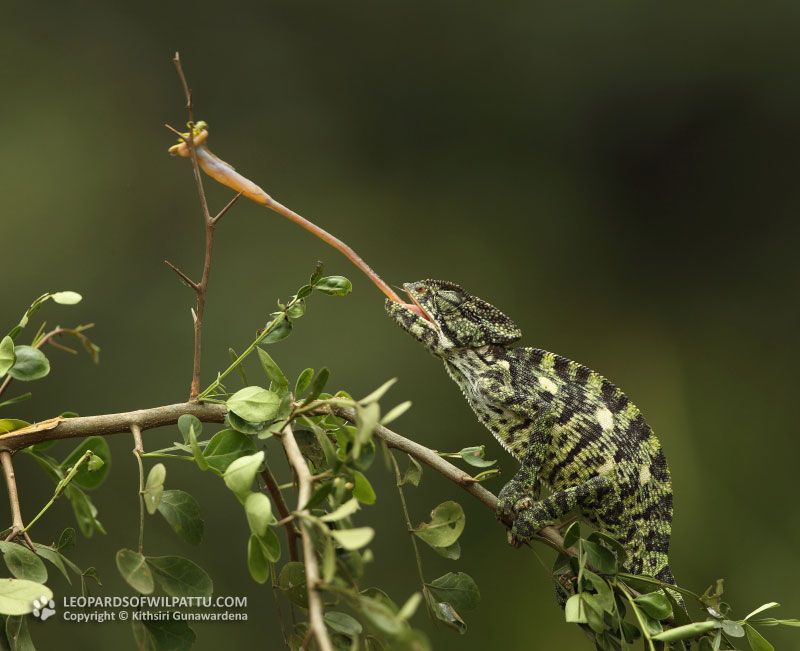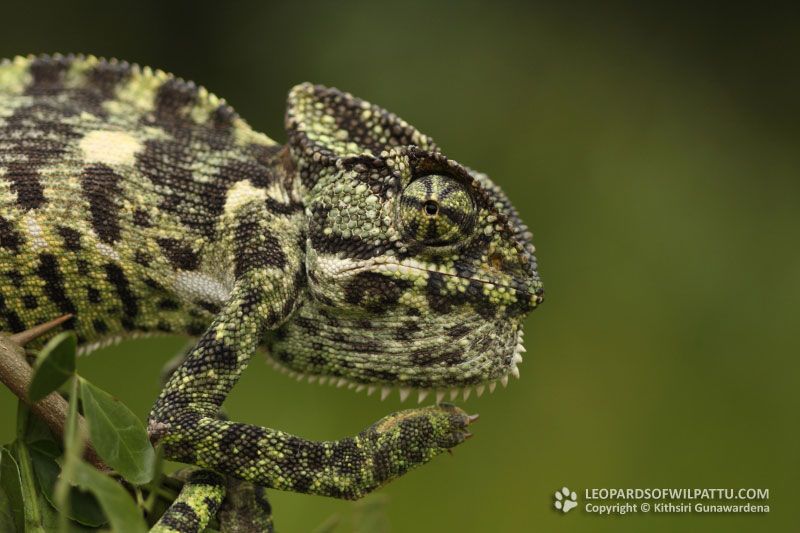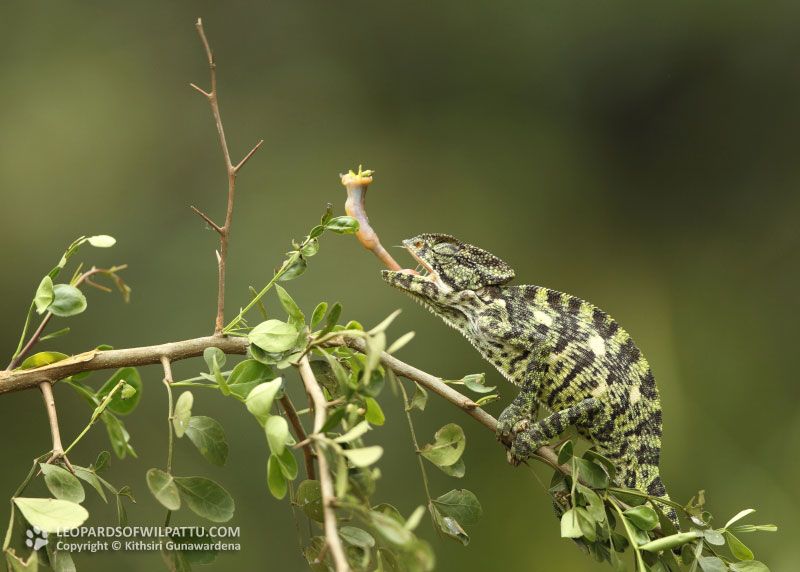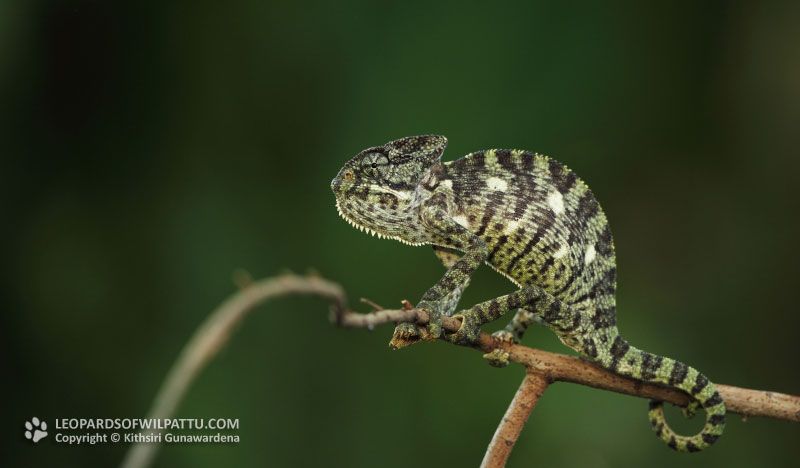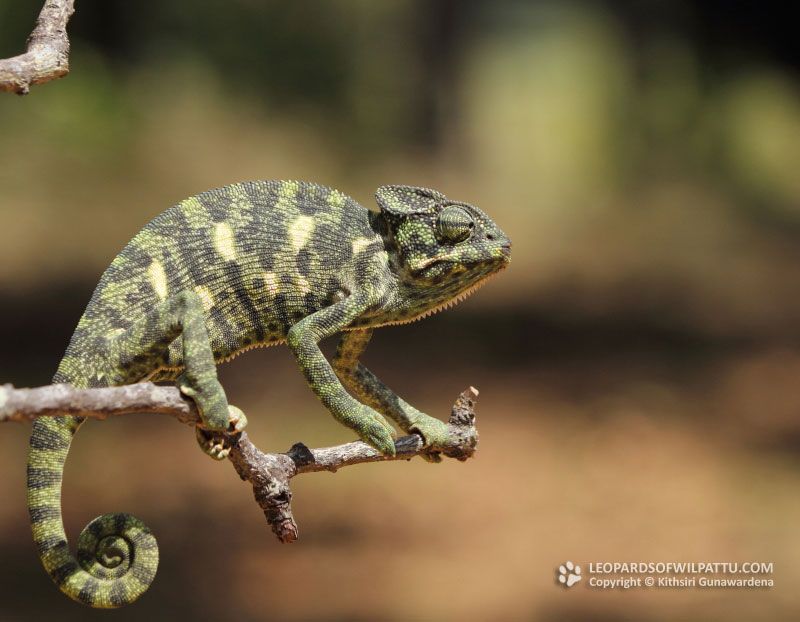
Reptiles ‹‹ Go Back
There are fifty-five species of chameleons recognized in the world and fifty-one of them are only found in Africa and Madagascar. The chameleon that occurs in Sri Lanka is one of the four species that is found out side Africa and Madagascar and is the only species of chameleon found in the Asian region. One out of the other three species occurs in the Mediterranean coastal areas and two in the Arabian peninsular.
Other than in Sri Lanka this interesting species with a prehensile tail and an exceedingly long sticky tongue is found in the arid areas of India and in the extreme Eastern parts of Pakistan. The conservation status of this species is regarded as “Endangered” (National Red List 2012) and is protected under the Fauna and Flora Protection Ordinance as amended by Act No. 22 of 2009.
Even though some members of the public refer to some species of Agamid Lizards as Chameleons, the above species is the only true Chameleon that is found in the country. As depicted in the photos the slow moving chameleon is quite different from any other type of lizard and uses exceptional adaptations, unique to its kind, to catch its insect prey. Its eyes are located at the end of cone shaped protrusions and the animal is able to use each eye independently to look in different directions. Once an insect is located the well-camouflaged chameleon will move slowly towards its prey in a vacillating motion while rocking backwards and forwards. Once the prey is in range it would dart its sticky tongue, which extends almost the length of its body, at lightning speed with pinpoint accuracy. The luckless insect that gets stuck to the end of its tounge is then directed towards its mouth in one swift continuous action to be devoured at leisure. In Wilpattu I have had the good fortune of observing a chameleon engage in hunting insects at Panikkar Villu.
The Chameleon is known to occur primarily in the northern arid zone with a few records from the southern arid zone close to Yala National park.
Even though this is strictly an arboreal species that is rarely found on the ground unless they have to move across an area which is devoid of foliage. In Wilpattu I have come across this species on a few of occasions slowly walking across the road. Once I spotted one close to Kalagedi Bokkuwa, which is about 5 km from the park entrance and another at Eluwankulama. On the 11th November 2012 around 9.30am I drove in to Aalam Villu and spotted an immature Crested Hawk Eagle perched on a Thimbiri Tree with a small prey in its talons across the villu. As I was not able to identify the prey and was curious to find out, I drove close to it and found that it was in fact a chameleon. Out side Wilpattu so far I have only seen this species at Anawilumdawa.
These animals have an astonishing ability to camouflage themselves and are extremely difficult to spot in the wild. They have a remarkable ability to change to colours of yellow, green and brown and shades in between in order to blend in to the environment they occupy. Carefully observing the foliage in open places and forest edges is the best way to locate this master of camouflage. However if you’re lucky enough to spot one of these animals it is prudent not to take your eyes off it until you observe or photograph it, as they have an uncanny ability to disappear in to the foliage quite quickly.

